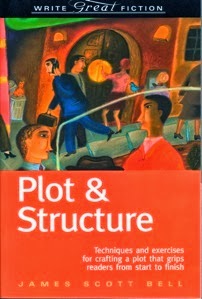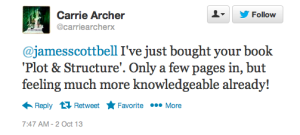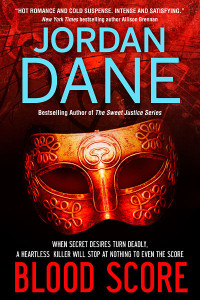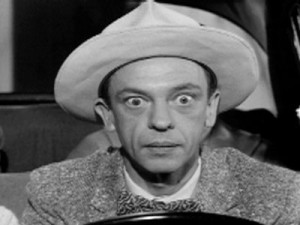Jordan Dane
@JordanDane
After James Scott Bell’s excellent post “We Are All Long Tail Marketers Now”, several side discussions took place in the comments regarding my self-published novel – BLOOD SCORE now available through the Amazon Kindle Select Program (my first time using this program). I’ll have the book discounted until August 1. (I love how the TKZ community gets involved with each post. Thank you.) Questions came up about my editing and production experiences with this novel since it is outside my traditionally published works.
As I mentioned in my comments on Jim’s post, the business end has always been a drain for me. Self-pubbing involves more than promo. It’s production of the actual book and the promo is ongoing (as it is for me with traditional publishers too), but with indie I’m in control of my production schedule, retail pricing and subrights decisions, and can capitalize on promo ops when I want to. Being a hybrid author, straddling traditional and indie publishing, gives me more options and many “irons in the fire.” I have many more points mentioned in another post I did on the subject. On my group YA blog ADR3NALIN3, I did a post on the “Ten Reasons Why I Am Self-Publishing.”
I wanted to dip my toe into the waters of indie with a non-fiction book as well as a short story anthology so I would know what was involved in production and to build up my contacts for service providers. My upcoming full-length novel project will be more about learning promotion. I’ve got loads of personal bookmarks for service providers, but the marketing side of the business needed work on my part. I’ve created a Self-Pub Resource tab on my YA blog-Fringe Dweller. I hope to update it as I go along. For now it encompasses review sites for digital books. That resource tab will be a work in progress as I go.
Basically, here are the indie production costs as I see them:
1.) Edits: $500-$1800+ – This is a tough one to estimate, but important. I’ve seen this cost higher, depending on if you need a book doctor or not. It depends on how much work needs to be done and who you use as editor. A good editor is worth their weight in sales, so shop wisely. Beta readers will only get you so far. Having said that, I’ve had some good and terrible copy editors on my traditionally published books. Being traditionally pubbed does NOT guarantee you will get a good one. At least with indie books, you can make the decision on who to use on current and future projects.
For this project I used authors/editors Alicia Dean and Kathy Wheeler. They helped with formatting and editing and made that effort painless and fun.
2.) Cover $150-400 – This range depends if you are doing a version for print or just digital. The print design costs more because it involves the design of a spine and back cover. You can do a cheaper cover by merely paying for one digital image from iStock or some other provider and add font and do it yourself graphically (not recommended), but a cover needs to look good on a thumbnail and a bad design can kill sales. On BLOOD SCORE, I used Croco Designs and love Frauke Spanuth, the designer. I’ve used her for blog header designs and bookmarks and now covers. She’s a German designer who works for publishers too. Her costs are reasonable on all fronts and she’s easy to work with and fast, but there are many cover designers out there now. Look through portfolios to find one you like.
3.) Formatting $100-150 – You can do this yourself, but I’ve never tried it. There are software programs, but haven’t tried that either
4.) Promotion $50-Whatever – This is totally up to you. There are many free sites that promo ebooks now (that are focused on ereaders), but there are also bundlers who will charge you $50 or so to post promo to 45 sites, etc. I’m hoping to try this with BLOOD SCORE.
5.) ISBN #s – this is an investment for future books. I bought 10 numbers, which keeps the cost down. I think the individual book price is higher to retain your own ISBN#, or you can use the one that Amazon or others assign you for free, but I prefer to have control of my own ISBNs. So this ISBN cost can cost you nothing, unless you decide you want control like I did. So spread $250 across ten books if you retain your own ISBNs.
So all in, you might pay $800 – $2400 (excluding ISBN costs), but you can manage your price to earn 35% – 70% royalty with a better monthly cash flow where you can control the price and promo ops. Using a price of $0.99 you’d earn 35%, but $2.99 or better and your royalty would be 70%. For a novel length book, I might discount it to $.99 for a certain period on release, but then move it up to $4.99. Hard to say what breakeven would be without real sales figures behind it, but you can play with the math.
$4.99 at 70% royalty, you’d have to sell 229 – 687 books to clear the cost range I mentioned. Mind you, this does NOT take into account any promo ad costs and assumes only one price at the higher royalty rate. If you were to move that price point to $2.99 at 70% royalty, your sales would have to be 382 – 1148 to breakeven.
A writer friend of mine shot me some real numbers. (I’m also on an indie writers loop where I hear lots of good info.) It takes having a number of good books to build up your “virtual shelf” of offerings and build your readership. Again, I repeat. Good books. But my crime fiction author acquaintance is seeing $7,000 – $10,000 per month for 8 novels or so, and this will grow as new material gets added. This author crafts a solid book and writes full time.
For me, I like having traditional contracts to fill, but I want the more immediate cash flow too, rather than waiting for royalty statements every 9 months (by the time they reach you). (Antiquated accounting methods and reporting systems for traditional publishers, in a digital age when sales are more immediate through Amazon and other online retailers, are more things that I hope will change.)
The last thing I’d like to talk about is the value of “a la carte” subrights (ie foreign rights, audio, print vs digital). In many deals, these rights are lumped in and assumed to be part of the deal, but should this continue as advances drop? Or if advances drop, shouldn’t the royalty percentage increase to offset the lower upfront money? Subrights have value to the indie author. (Here’s a LINK to a post I did on self-publishing in audio, for example.) If an author gets an offer, but the advance is marginal or too low to tie up copyrights for years (something I am presently experiencing on my back list), do you have options?
You can certainly turn the deal down. That’s one option. I did this with BLOOD SCORE when I got an offer to buy it from a big house. After my experiences, the offer wasn’t good enough to deal with the aftermath of a rights tie up into infinity.
Even if an advance is $10,000-15,000/book, that might not be enough if the terms of the contract are onerous over the long haul. Successful thriller Barry Eisler turned down a deal from a traditional house for $500,000+. That boggled my brain, but no one knows the terms of that deal that made Barry change his mind. He’s a real marketing guru and has a solid readership. Deals are subjective.
These days this is a personal decision each author has to make, but if publishers would negotiate on terms, a marginal advance deal might work if the number of years for digital rights can be limited before they would automatically revert back to the author (ie 2-3 yrs only) or if UK rights were granted but digital rights in the US are retained. Some successful indie authors have retained digital rights, but sold print rights (ie John Locke to Simon and Schuster). With “out of the box” thinking and a little negotiating, some of these marginal deals can be done if the parties agree on specific terms, but I’m not sure traditional houses are open to such change yet.
Food for thought and discussion at TKZ:
1.) If an advance is too low to tie up copy rights, what terms do you think can be negotiated to make the deal happen? Do you think the publishing industry is changing in this regard?
2.) If you’re an aspiring author, would you sign a contract at ANY advance to be published, or do certain contractual terms matter to you?






